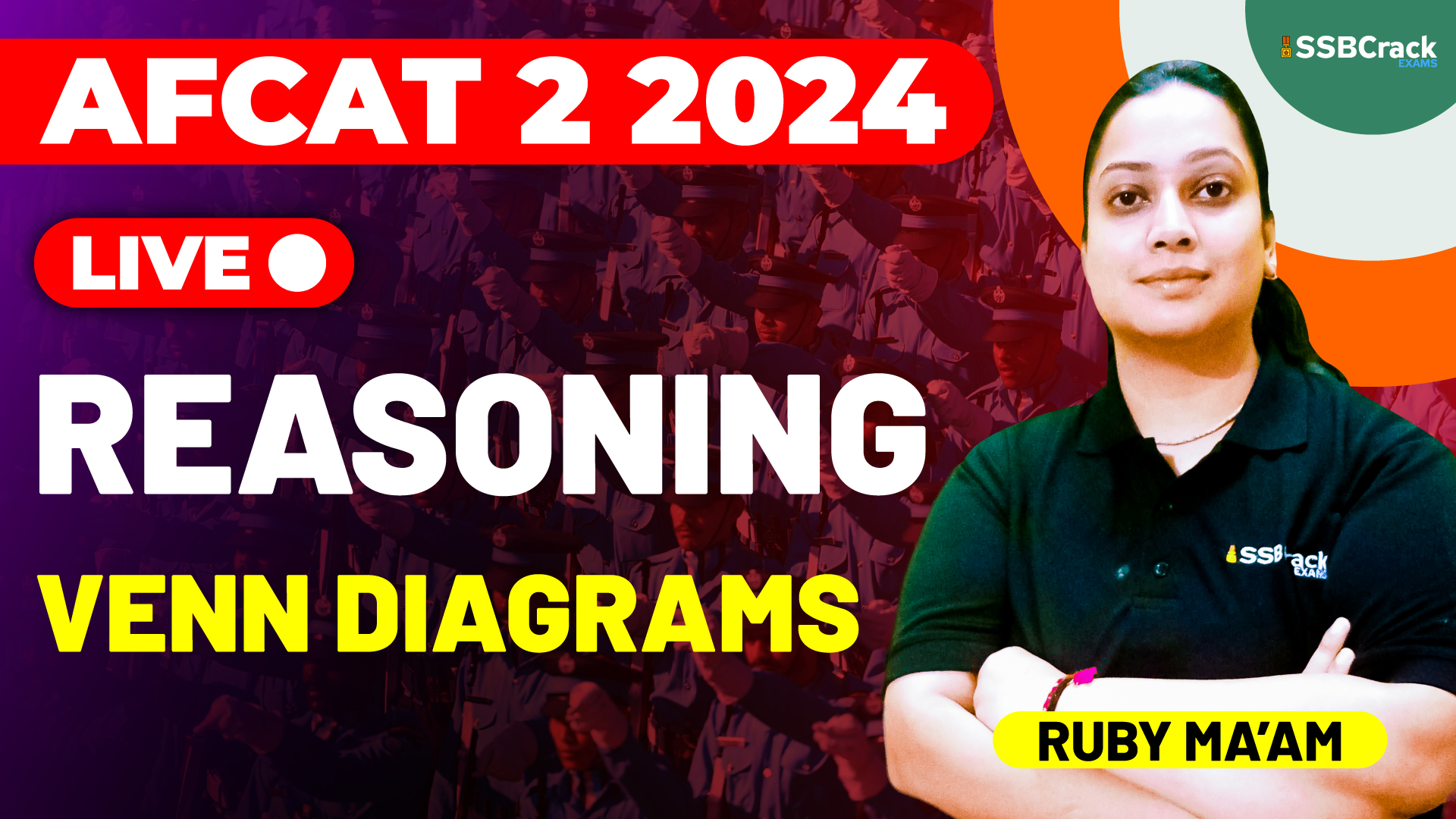The Air Force Common Admission Test (AFCAT) is a gateway for aspirants to join the esteemed Indian Air Force. One of the crucial sections in this competitive exam is reasoning, which assesses a candidate’s logical thinking and problem-solving abilities. Among various tools and techniques employed to tackle reasoning questions, Venn diagrams stand out as exceptionally effective and indispensable.
Understanding Venn Diagrams
Venn diagrams are graphical representations used to show all possible logical relations between a finite collection of different sets. Typically, they consist of overlapping circles, each representing a set. The overlapping areas between the circles illustrate the common elements between sets, while the non-overlapping areas show elements unique to each set.
Why Venn Diagrams Matter in AFCAT
- Visual Clarity: Venn diagrams provide a visual method to solve complex logical problems. They allow candidates to break down intricate relationships into simpler, more manageable parts. This clarity is particularly beneficial in reasoning questions involving set theory, syllogisms, and data interpretation.
- Efficiency in Problem-Solving: Time management is crucial in AFCAT. Venn diagrams help in solving problems quickly and accurately. By visually organizing information, candidates can identify intersections, unions, and exclusions of sets at a glance, reducing the time needed for analytical thinking.
- Enhanced Logical Understanding: Regular practice with Venn diagrams enhances a candidate’s ability to understand and interpret logical relationships. This improvement in logical reasoning skills is not just limited to Venn diagram questions but extends to other reasoning problems as well.
- Versatility: Venn diagrams are versatile tools. They are used in a variety of reasoning problems, including those related to categories, classification, and even probability. This versatility makes them a valuable tool in a candidate’s reasoning arsenal.
Application in AFCAT Reasoning Questions
Here are some common types of reasoning questions in AFCAT where Venn diagrams prove to be invaluable:
- Syllogisms: These questions involve logical arguments with two or more statements, followed by a conclusion. Venn diagrams help in visualizing the relationships between different premises, making it easier to determine the validity of the conclusion.
- Set Theory Problems: Questions that require understanding of unions, intersections, and differences between sets are efficiently solved using Venn diagrams. They help in clearly visualizing the distribution of elements among different sets.
- Data Interpretation: In some reasoning questions, data is presented that needs to be categorized into different groups. Venn diagrams help in organizing this data logically, making it simpler to interpret and analyze.
Tips for AFCAT Aspirants
- Practice Regularly: Regular practice with Venn diagrams will make you more comfortable with their application. Solve various types of problems to understand different ways in which Venn diagrams can be used.
- Understand the Basics: Ensure you have a strong grasp of basic set theory concepts such as union, intersection, and complement of sets. This foundational knowledge is crucial for effectively using Venn diagrams.
- Use Online Resources: There are numerous online platforms offering practice questions and tutorials on Venn diagrams. Utilize these resources to enhance your skills.
- Mock Tests: Incorporate Venn diagram questions in your mock tests. This will not only help you in understanding their application but also in managing time effectively during the exam.
Conclusion
Venn diagrams are more than just a graphical tool; they are a strategic asset in the reasoning section of the AFCAT. Their ability to simplify complex relationships and enhance logical clarity makes them indispensable for aspirants aiming to excel in the exam. By mastering Venn diagrams, candidates can significantly improve their efficiency and accuracy in solving reasoning problems, paving their way to success in the AFCAT.



















